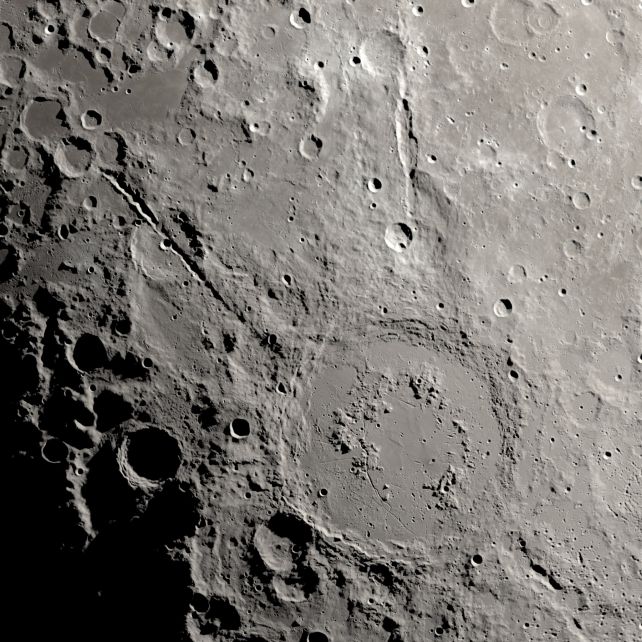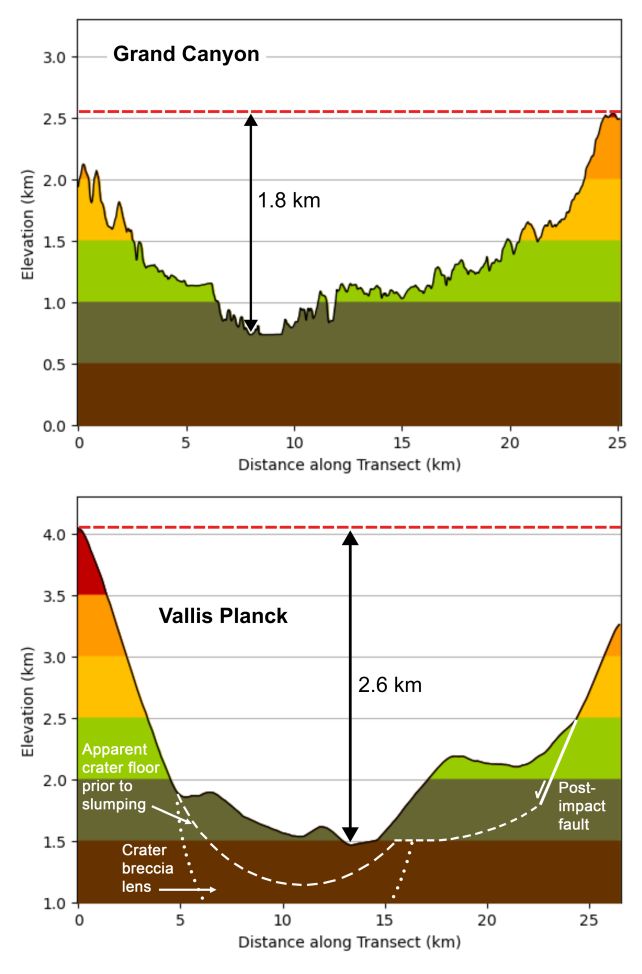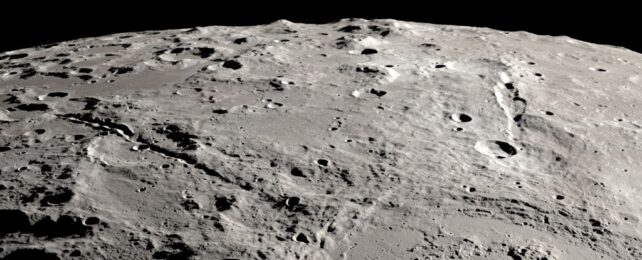Arizona's magnificent Grand Canyon is painstaking result of the Colorado River's current wearing away the planet's surface over millions of years.
Earth, however, isn't the only body in the Solar System with canyons and gorges. The Moon has structures comparable to Earth's Grand Canyon; although, in the absence of liquid water, their formation mechanism has been difficult to determine.
Now, scientists believe that they have figured it out. Two huge canyons scored into the surface of the Moon were created in the wake of a giant impact – and, in stark and jaw-dropping contrast to the Grand Canyon, their creation could have taken less than 10 minutes.

The two canyons in question, known as Vallis Schrödinger and Vallis Planck, can be found radiating away from an impact basin known as the Schrödinger crater on the lunar far side, near the south pole.
These things are huge – measuring 270 kilometers (168 miles) long and 2.7 kilometers deep, and 280 kilometers long and 3.5 kilometers deep, respectively. The Grand Canyon on Earth is longer, at 446 kilometers, but shallower, at 1.86 kilometers.
Such gouges, known as ejecta rays, can form when huge chunks of material are thrown by an impact event. But a team led by planetary scientist David Kring of the US Lunar and Planetary Institute wanted to really narrow down the formation process of these enormous canyons.

Kring and his colleagues combined photos of the Moon's surface to generate maps of the direction and distribution of the sprayed ejecta resulting from the Schrödinger impact. They then used this information to reverse engineer the impact itself, reconstructing the ejecta spray.
The team found that the impact was asymmetrical, with most of the ejecta distributed away from the lunar south pole. And it was intense. The material that created Vallis Schrödinger and Vallis Planck was traveling between 0.95 and 1.28 kilometers per second.
The impact energy required to produce this fallout, the researchers say, is around 130 times the energy contained in the entire global inventory of nuclear weapons.
The upcoming Artemis III lunar mission will be visiting the lunar far side, near the south pole, although the exact landing site has yet to be determined. The astronauts will not be in significant danger from huge impacts; the Schrödinger impact is estimated to have occurred 3.8 billion years ago, when there were a lot more large rocks flying around.
Rather, the results have implications for lunar exploration. The team's models suggest that the impact ejecta was mostly sprayed away from the proposed Artemis landing sites, which means that the explorers may have better access to the older, underlying minerals they want to study.
The launch is currently scheduled for 2027. When the mission arrives, what the Artemis crew finds will undoubtedly reveal more about how and when this huge impact unfolded.
The research has been published in Nature Communications.
